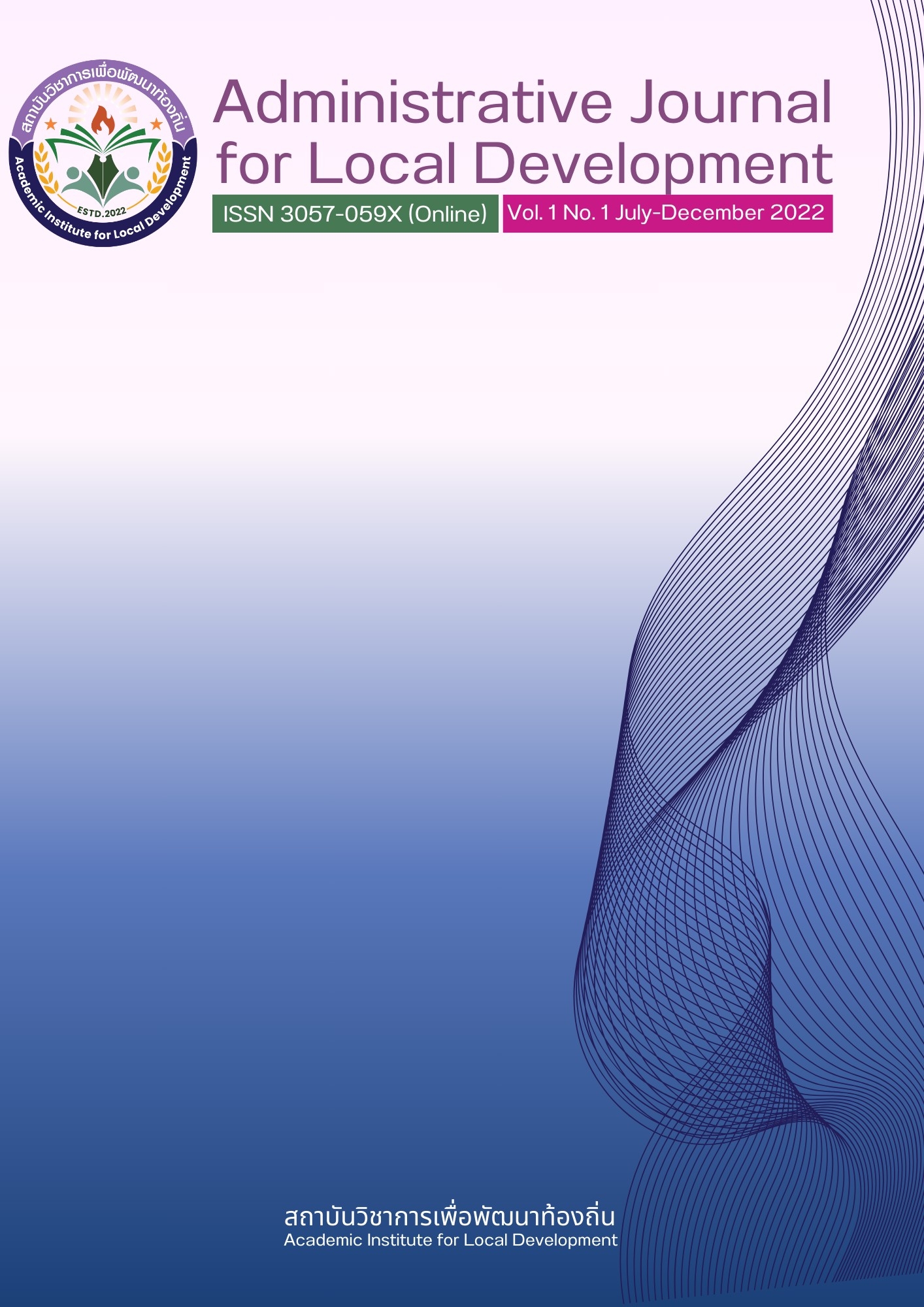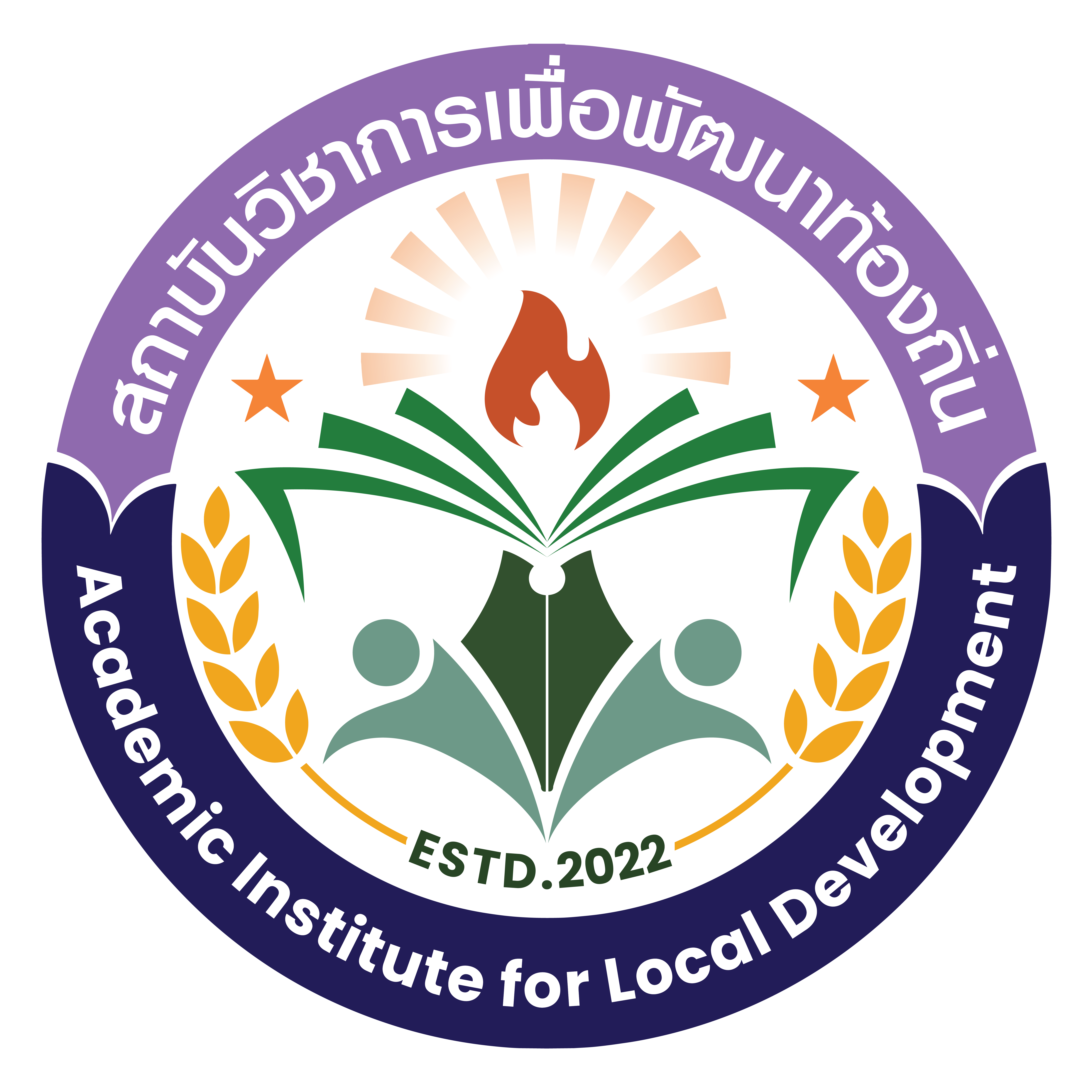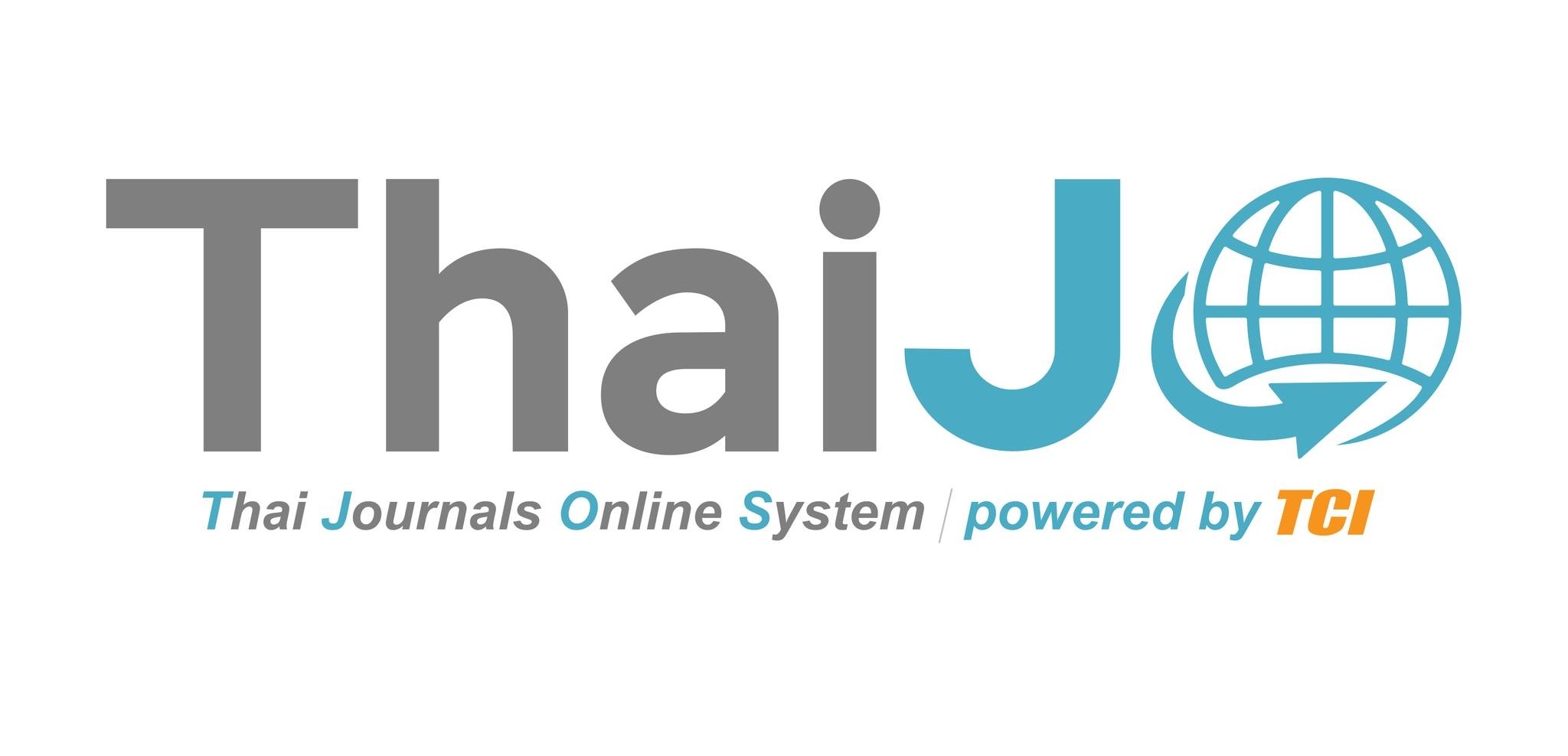Participation in managing community waste in Ban Na Tang,Kwaen Srin Rin Sub-district, Kwaen Srin Rin District,Surin Province
DOI:
https://doi.org/10.14456/ajfld.2022.10Keywords:
Community participation in compost waste management, Ban Na Tang, kwaeRin Sub-districtAbstract
The main objectives of this research are as follows 1).To study the level ofcommunity participation in managing compost waste among the people in Ban NaTang, Kwaen Srin Rin Sub-district, Kwaen Srin Rin District, Surin Province. 2).To studythe creation of value from waste for the people in Ban Na Tang, Kwaen Srin RinSub-district, Kwaen Srin Rin District, Surin Province. 3).To find strategies andmeasures for managing compost waste among the people in Ban Na Tang, Kwaen Srin Rin Sub-district, Kwaen Srin Rin District, Surin Province, using a mixed research
method combining quantitative and qualitative approaches. The quantitative research uses a sample group from the community in Ban Na Tang, Kwaen Srin Rin Sub-district, Kwaen Srin Rin District, Surin Province, with a total of 181 households and 504 individuals, divided into 4 villages: 1). Kum Sarttattham Village, 2). Kum Nam Samakkhi Village, 3).Kum Sripracha Village, and 4).Kum Burasanti Village, totaling 504 people. The research uses a multi-stage sampling technique, using a sample size determined by Taro Yamane's formula, resulting in a total sample size of 223 people. The survey questionnaire is used to collect data, with both open- ended and closed-ended questions. The quantitative data is analyzed with a confidence level of 95% and a significance level of 0.05, using statistical tests such as t-test, F-test, and one-way ANOVA. For qualitative research, in-depth interviews are conducted with 223 participants, including community leaders, volunteers, and community members, using purposive sampling and content analysis techniques were applied. The research findings revealed that
- The overall level of public opinion regarding community participation in compost waste management in Ban Na Tang, Kwaen Srin Rin Sub-district, Kwaen Srin Rin District, Surin Province, is moderate. When considering each aspect individually, it is found that the average level of public opinion in all 4 aspects is moderate.
- The results of comparing the levels of community participation in compost waste management among the people in Ban Na Tang, Kwaen Srin Rin Sub-district, Kwaen Srin Rin District, Surin Province, categorized by 6 aspects and according to personal istics such as gender, age, education level, average monthly tion, and status, indicate that individuals in the community with age, education level, average monthly income, occupation, and sta ferent levels of participation in compost waste management in Ban Kwaen Srin Rin Sub-district, Kwaen Srin Rin District, Surin Province. Overall, there are significant differences in the levels of community participation in compost waste management among the people in Ban Na Tang, Kwaen Srin Rin Sub-district, Kwaen Srin Rin District, Surin Province, based on these characteristics, with statistically significant differences at the 0.05 level, thus accepting the hypothesis set forth.
3. The guidelines for community participation in compost waste management in Ban Na Tang, Kwaen Srin Rin Sub-district, Kwaen Srin Rin District, Surin Province, reveal the following: Regarding waste reduction: Villagers actively contribute ideas and participate in various activities related to reducing compost waste in the community. They consistently emphasize the importance of reducing compost waste. Within the community, there is good cooperation in reducing compost waste. Regarding reuse: Community members collaborate in transforming unused items into various materials for further use. This reflects the community's commitment to sustainable practices. Regarding benefiting from waste management: Community members are aware of and appreciate the benefits of compost waste management in the community. They are able to apply the knowledge gained from these activities for wn and the community's benefit, as well as pass it on to future ge Regarding evaluation: Overall, villagers closely monitor the evaluation process, indicating their strong commitment to sustainable waste management practices
Downloads
References
กาญจนา แก้วเทพ. (2538). การพัฒนาแนววัฒนธรรมชุมชนโดยถือมนุษย์เป็นศูนย์กลาง กรุงเทพฯ: สามัคคีสาส์น
กานดาภร ไชยปากด. (2553). การมีส่วนร่วมของชุมชนด้านการจัดการขยะมูลฝอยขององค์การบริหาร ส่วนตำบลบึงโขงหลง อำเภอบึงโขงหลง จังหวดหนองคาย. [วิทยานิพนธ์ปริญญามหาบัณฑิต ไม่ได้ตีพิมพ์]. มหาวิทยาลัยมหาสารคาม.
เกษม จันทร์แก้ว. (2550). วิทยาศาสตร์สิ่งแวดล้อม. กรุงเทพฯ: มหาวิทยาลัยเกษตรศาสตร์.
เฉลิม มีระสิงห์. (2556). การพัฒนารูปแบบการส่งเสริมการออกกำลังกายเพื่อสุขภาพของประชาชนบ้านป่าชาด ตำบลห้องแซง อำเภอเลิงนกทา จังหวัดยโสธร. [วิทยานิพนธ์ปริญญามหาบัณฑิต ไม่ได้ตีพิมพ์]. มหาวิทยาลัยมหาสารคาม.
จิรพัฒน์ หงส์ทอง. (2553). การมีส่วนร่วมของประชาชนในการจัดการขยะมูลฝอยเทศบาลตำบลบึงโขงหลง อำเภอบึงโขงหลง จังหวัดหนองคาย. [วิทยานิพนธ์ปริญญามหาบัณฑิต ไม่ได้ตีพิมพ์]. มหาสารคาม:มหาวิทยาลัยมหาสารคาม.
ทรนง ศรีมันตะ. (2556). รูปแบบการส่งเสริมการออกกำลังกายโดยการมีส่วนร่วมของประชาชนบ้านโคกสำราญ ตำบลโคกสำราญ อำเภอเลิงนกทา จังหวัดยโสธร. [วิทยานิพนธ์ปริญญามหาบัณฑิต ไม่ได้ตีพิมพ์]. มหาวิทยาลัยมหาสารคาม.
เทวัญ พัฒนาพงศ์ศักดิ์.(2540). การแยกมูลฝอยและการจัดการมูลฝอยที่แยกแล้วในแหล่งกำเนิดต่างๆ ในเขตเทศบาลนครเชียงใหม่. [วิทยานิพนธ์ปริญญามหาบัณฑิต ไม่ได้ตีพิมพ์].มหาวิทยาลัยเชียงใหม่.
ธีระพงษ์ แก้วหาวงษ์. (2542). การพัฒนารูปแบบความร่วมมือระหว่างประเทศ NGOและองค์กรประชาชุมชน. ขอนแก่น: คลังนาวิทยาการพิมพ์
นันทพร มณีรัตน์. (2551). การจัดการขยะมูลฝอยในครอบครัวของประชาชนในเขตเทศบาลตำบลเกาะแก้ว อำเภอเสลภูมิ จังหวัดร้อยเอ็ด. [วิทยานิพนธ์ปริญญามหาบัณฑิต ไม่ได้ตีพิมพ์]. มหาสารคาม:มหาวิทยาลัยมหาสารคาม.
บุญชม ศรีสะอาด. (2556). วิธีการทางสถิติสาหรับการวิจัย เล่ม 1 (พิมพ์ครั้งที่ 5).กรุงเทพฯ: สุวี ริยาสาส์น.
ปภาวรินท์ นาจำปา. (2557). การมีส่วนร่วมของประชาชนต่อการจัดการขยะมูลฝอยของเทศบาลตำบลคลองใหญ่ อำเภอคลองใหญ่ จังหวัดตราด. [วิทยานิพนธ์ปริญญามหาบัณฑิต ไม่ได้ตีพิมพ์].มหาวิทยาลัยบูรพา.
ปิยภัทร สายนรา. (2552). การจัดการขยะมูลฝอยแบบมีส่วนร่วมของประชาชน :กรณีศึกษาชุมชนวัดพระธาตุหนองบัว 1 เทศบาลนครอุบลราชธานี จังหวัดอุบลราชธานี.วิ[วิทยานิพนธ์ปริญญามหาบัณฑิต ไม่ได้ตีพิมพ์]. มหาวิทยาลัยราชภัฏอุบลราชธานี.
Downloads
Published
How to Cite
Issue
Section
License

This work is licensed under a Creative Commons Attribution-NonCommercial-NoDerivatives 4.0 International License.









